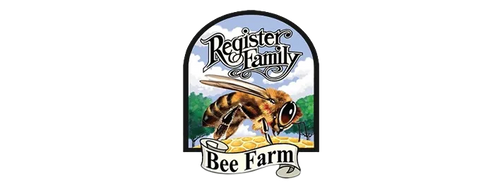The late summer period is one of our least hectic, but most crucial times on Register Family Farm. With nectar production down and bee populations up, we have to focus less on making honey and more on the survivability of our hives. We're introducing new queens and making sure they're correctly mated so that they can lay a good pattern of workers and drones. A mistake here could spell doom for the hive.
More Bees with Less Food
After the spring and early summer honey rush, when the bees have had high temperatures and such an abundance of nutrients, nectar, and pollen coming into the hive, the population is growing, and the queen is laying eggs like crazy. The population is high, and there has been a lot of brood building up to this point. This normally means larger dangerous pest populations in the hive as well. You can run into big problems if you're not paying attention and keeping the pest numbers to a manageable level. This is the beginning of the end for a lot of inexperienced beekeepers.
Large hive populations consume a lot of honey and pollen. There are not a lot of good nectar and pollen-producing forage options for the bees around here in late summer, so we have to make sure they can support themselves. To sustain them, we take our hives to more agricultural areas where there are cotton plants and more open fields for them to forage in.
At this time of year, any honey we make is a bonus. We are extremely focused on the health of our hives. Even though it is a slower production season, we're still busy checking the hives, pulling and extracting honey, and generally caring for our hives. Our equipment and bees have to be ready for transport south for the Brazilian pepper flow, the last big rush before winter.
Bringing In The Queen Bees
When we make new hives or replace or add a queen, we introduce the queens to their new hives in a ventilated cage that has an exit blocked by “queen candy.” As the worker bees eat through the sugary plug to release the new queen, they are getting used to her pheromones and should accept her as soon as they have freed her.
The queen should start laying eggs a couple of days after she has been released, so we have to check to make sure this happens as expected. However, we have to come back again two weeks after the original introduction to make sure she was properly mated and is laying both workers and drones.
Breeding Honey Bees
The Bees’ Needs
Every day with good weather, the drones will all travel two to three miles away to the drone congregation area and wait. Newly hatched queens will fly by this group, and the drones will chase after her. In this way, only the fastest drones can mate, and the queen ends up with enough genetic material to last her whole life. She stores it in an organ called a “spermatheca.”
She may return to the drone congregation area for several days, but once she is mated, she will remain in the hive. 80 percent or more of the eggs that a properly mated queen lays will be fertilized eggs that will become female worker bees. Aside from the continuation of the species, drones serve no purpose. They just eat and take up space. They can't even sting. They die in the process of mating, so they can only mate once. It is very important to have a healthy drone population throughout the spring and summer.The bees know when fall and winter are coming, and, to conserve resources, they kick out all of the drones to die until the spring comes and more are born. This is a very dangerous time to lose queens because the replacement queen won't have any fertilized eggs if she was born too late in the season due to the low drone population. This is also why improperly mated queens can be so devastating to the hive since she lays only unfertilized male drone eggs and no fertilized female workers. In both cases, it is unlikely the hive will survive until spring unless we identify the problem and intervene.
Even though we have a slightly less hectic schedule this time of year, we have to be careful as the weather turns colder. There are many hazards that could cause the collapse of our hives. We make sure to keep a close eye on our bees to keep them happy and healthy so they can survive and thrive going into the next season.
